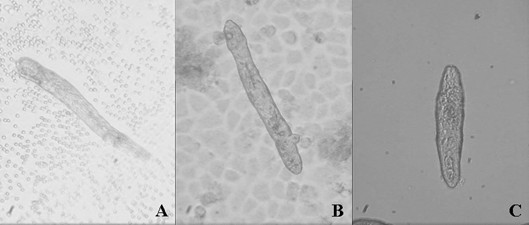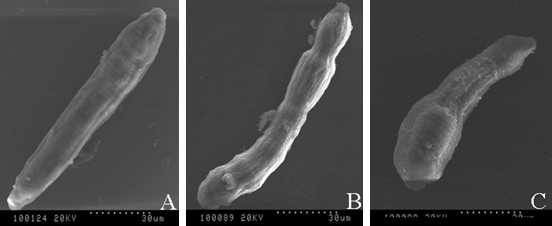In-vitro schistosomulum co-culture method
A technology of co-culture and schistosomiasis, applied in the field of biomedicine, can solve problems such as differences in gene expression
- Summary
- Abstract
- Description
- Claims
- Application Information
AI Technical Summary
Problems solved by technology
Method used
Image
Examples
Embodiment 1
[0029] Example 1: Comparison between co-cultured larvae for 3 days and larvae in the host, and routine culture in vitro for 3 days
[0030] 1. Establishment of co-cultivation method of Schistosoma japonicum larvae and host cells ( figure 1 )
[0031](a) Take the positive snails and release the cercariae by the conventional method, paste the escaped cercariae with a sterilized cover glass with a size of 12×25mm, and put 10ml of cercariae washing solution (containing 0.5% hydrolyzed milk protein, 300IU / ml penicillin and 300ug / ml streptomycin (Earle's solution) at 4°C for 10-15min, centrifuged at 700g for 3min, removed the supernatant and coverslip, washed with cercariae washing solution, and centrifuged aseptically for 5-6 times. Then add 4-5ml of washing solution and mix with the cercariae, suck the cercariae suspension into a sterilized 10ml syringe, connect it to another sterile 10ml syringe through a sterile conjoined needle, and push the cercariae repeatedly and quickly ...
PUM
 Login to View More
Login to View More Abstract
Description
Claims
Application Information
 Login to View More
Login to View More - R&D
- Intellectual Property
- Life Sciences
- Materials
- Tech Scout
- Unparalleled Data Quality
- Higher Quality Content
- 60% Fewer Hallucinations
Browse by: Latest US Patents, China's latest patents, Technical Efficacy Thesaurus, Application Domain, Technology Topic, Popular Technical Reports.
© 2025 PatSnap. All rights reserved.Legal|Privacy policy|Modern Slavery Act Transparency Statement|Sitemap|About US| Contact US: help@patsnap.com



